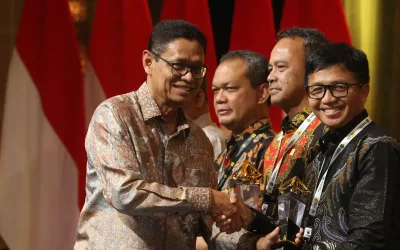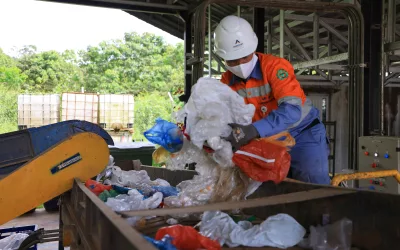Earth Day, celebrated every year on April 22 since 1970, is widely recognized as the largest secular observance in the world, marked by more than a billion people every year as a day of action to change human behaviour and create global, national and local policy changes.
As the awareness of our climate crisis grows, so does civil society mobilization, which is reaching a fever pitch across the globe today, the fight for a clean environment continues with increasing urgency. Now, the citizens of the world are rising to demand far greater action for our planet and its people.
Greenhouse gas (GHG) emissions are one of the main causes of rising global warming, and the metals and mining industry accounts for approximately 4% to 7% of worldwide greenhouse gas emissions. A substantial amount of greenhouse gasses emitted by fuel use, onsite electricity, and other sources include CO2, methane, and NOx. Arguably more than any other industry, miners face incredible pressure from governments, investors, and society to reduce emissions. The challenge for the mining industry is to determine how to provide the minerals the world needs to prosper, all the while making their operations part of the solution to address climate change.
Read Also: Agincourt Resources Provides Water and Energy Conservation Training for 7 Fostered Adiwiyata Schools
Current trends indicate that the move towards renewables is on the rise. Mining industry leaders should not delay in pursuing this course, or they may find themselves on a higher cost curve, playing catch-up with competitors.
Here is how renewable energy technology is changing the mining industry for the better:
- Cheaper mining operations
- More employment opportunities
- Lower greenhouse gas emissions
- Sustainable development support
- Energy efficiency on mine sites
The most common uses of renewable energy in the mining industry involve:
- Solar energy lowers environmental risks
Solar energy uses the sun’s radiation to create concentrated solar power (CSP) or photovoltaic power (PV), which happens to be one of the most sustainable power sources. In addition to its low cost, solar energy does not contribute to environmental risks that are associated with nuclear power, water pollution, nitrogen oxides, and other harmful waste.
- Wind energy powers the grid
One of the most popular ways to generate electricity, is wind energy converts kinetic energy into a mechanical power source. The energy produced can be harnessed to send power across the grid for several types of mining operations.
- Water conservation uses cutting-edge technology
Water is an important resource for mining. Fuel extraction from mine sites produces toxic wastewater. However, reprocessing the wastewater with more water treatment technologies helps to minimize the number of toxins, making it better for the environment.
- Renewable energy powers machinery and operation sites
Green energy technologies enable us to create more effective ways to generate electricity for use in mines. The use of renewable energy encourages us to make innovations like:
- Electric Vehicles
- Hybrid power plants
- Microgrids and Artificial intelligence (AI)
- 3D Printing
- Bladeless wind turbines
- Hydraulic mining
Renewable energy solutions allow corporations to operate in harmony with the natural world. As the greener resources continue to expand, the mining industry is now able to carry out smarter policies, invest in cleaner solutions, and support further research to embrace its purposes.







